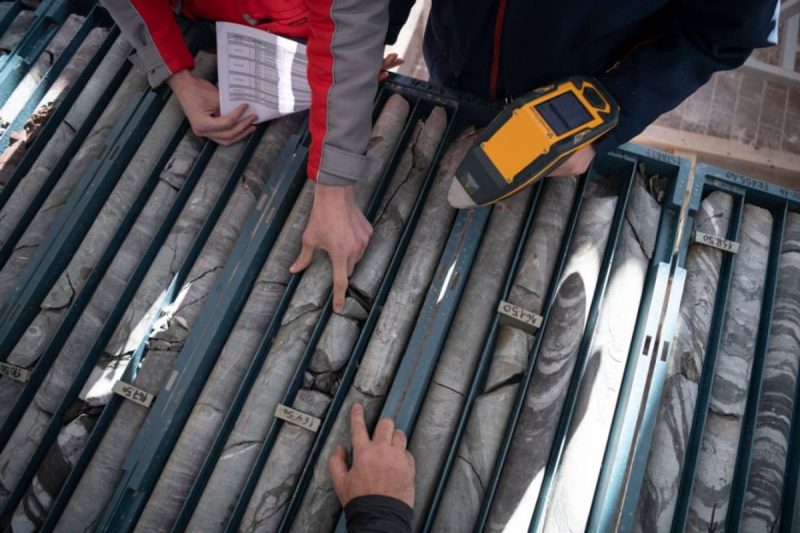When searching for world-class gold deposits, mining companies prefer high-grade, near-surface mineralization. Epithermal gold deposits check these boxes and more.
While gold is often their dominant metal, epithermal deposits are also known to contain economic concentrations of precious metal silver, and in some cases base metals such as copper, lead, iron ore and zinc.
One of the most prolific epithermal deposits in the world is Fresnillo’s (LSE:FRES,OTC Pink:FNLPF) namesake mine in Mexico. In operation since 1954, the Fresnillo mine produced an impressive 13.61 million ounces of silver, 34,432 ounces of gold, 21,756 metric tons (MT) of lead and 43,343 MT of zinc in 2022.
How are epithermal gold deposits formed?
Epithermal systems are a classic example of a lode deposit in that the mineralization is disseminated throughout a hard-rock orebody. Other lode deposit types include volcanogenic massive sulfide (VMS) deposits and Carlin-type deposits.
Epithermal gold deposits are often characterized by a network of mineralized veins within igneous or metamorphic rocks. These mineral deposits commonly occur in island, volcanic and continental arcs associated with subduction. However, they can also be found in shallow marine environments and in association with hot springs. Typically, epithermal gold deposits are younger than their enclosing rocks, except in cases where deposits form in active volcanic settings and hot springs.
But how exactly do epithermal gold deposits form? Groundwater is key to the process — when it comes into contact with hot molten rocks deep underground, the silicate minerals in the rocks are dissolved, as are metals within the sedimentary rocks, including gold, silver, lead and zinc. This hydrothermal fluid then moves into open spaces, such as cracks, joints and faults in the rock. Eventually the hydrothermal fluid cools, creating high-grade mineralized vein systems.
Grade is a measure of the concentration of metal in an orebody and is an important factor in determining how much a deposit is worth. Deposit grades for many metals are expressed as a weight percentage of the total rock, but gold grades are measured in grams per MT. To determine the grade of a gold deposit, exploration companies carry out drill programs to extract samples of rock called cores, and then conduct chemical assays on the cores to analyze the mineral composition.
Epithermal deposits are capable of producing “bonanza” level grades — more than 30 grams per MT. The Nevada-based Comstock deposit and Cripple Creek Colorado deposit are examples of epithermal bonanza-grade deposits.
Not only are epithermal deposits frequently high grade, but they are also found at shallow depths, meaning they are amenable to low-cost mining methods. Although in the past underground techniques were used, today most epithermal gold deposits are mined using open-cut pit technologies.
What are the subtypes of epithermal gold deposits?
Epithermal gold deposits can be broken down into three main subtypes:
High-sulfidation systemsIntermediate-sulfidation systemsLow-sulfidation systems
Typically, low-sulfidation deposits are higher-grade and lower-tonnage, while high-sulfidation deposits are lower-grade and higher-tonnage. As the name suggests, intermediate-sulfidation deposits fall in between.
Gold is not always the dominant metal in epithermal deposits. Metals ratios vary widely among deposits and even within a given deposit. Sometimes these deposits hold more silver than gold; this is the case for the Fresnillo mine, which exists in a district characterized by low-sulfidation epithermal quartz-carbonate veins. Silver-to-gold ratios are generally higher in low-sulfidation deposits than in high-sulfidation deposits, which tend to have more gold than silver.
All three deposit subtypes form under similar circumstances; however, intermediate- and high-sulfidation deposits can form at greater depths with vein systems trending at further depth. Unsurprisingly, high-sulfide deposits tend to be richer in sulfides, and they may contain pyrite and enargite in addition to gold and silver. These higher-sulfide epithermal deposits tend to be linked to porphyry deposits. The Toodoggone district of Northern BC, Canada, is a classic example of epithermal gold-silver and copper-gold porphyry systems occurring together in the same geological setting.
Securities Disclosure: I, Melissa Pistilli, hold no direct investment interest in any company mentioned in this article.





























